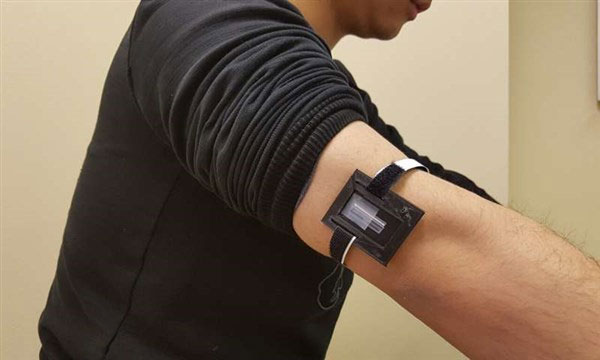There is an increasing number of wearable devices equipped with lactate sensors to aid in sports training.
However, this technology has sparked much debate regarding its usefulness in monitoring sweat during exercise. According to an article in ACS Sensors – a journal of the American Chemical Society, experts are focusing on whether this technology can enhance performance while preventing injuries in athletes.

Temperature and pH often affect the electrochemical readings of lactate.
The co-authors of the article, Gaston Crespo and Maria Cuartero, are Assistant Professors at the Royal Institute of Technology KTH (Sweden). The two researchers stated that lactate sensor technology is marketed as being able to determine in real-time whether an athlete is overexerting or underexerting. However, the reality is not quite so clear.
“There is not enough evidence to establish a connection between athletic performance and lactate levels. There is also a lack of understanding regarding the relationship between lactate in sweat and lactate in blood, as well as its connection to other biomarkers,” Crespo explained.
Lactate, or lactic acid, is a byproduct of anaerobic respiration, where muscle cells metabolize glucose for energy without oxygen. Blood sampling from athletes helps scientists and coaches assess the athlete’s performance and fitness levels.
According to researchers, there is currently no widely accepted method for collecting and analyzing sweat that provides reliable data to determine the correlation between sweat lactate and blood lactate.
The article analyzes the current state of electrochemical lactate sensors integrated into wearable devices. It also lists the key features that need improvement or modification to achieve success in this technology.
Temperature and pH often affect the electrochemical readings of lactate, leading to measurements that are significantly lower than expected. As a result, researchers have developed a method to isolate lactate in sweat by using a specially designed polymer layer on the exterior of the sensor.
This polymer ensures that the enzymes in the sensor do not react with anything other than lactate, while also allowing the sensor to read higher lactate concentrations compared to conventional electrochemical sensors.
Researcher Crespo mentioned that this technology is being developed through a startup company – IDRO BV. Additionally, researchers at Dalarna University (Sweden) are using this technology to conduct tests on the body.
These tests involve correlating blood and sweat measurements with the athletic performance of athletes. Furthermore, sweat samples are collected to validate the performance of the sensors.


















































